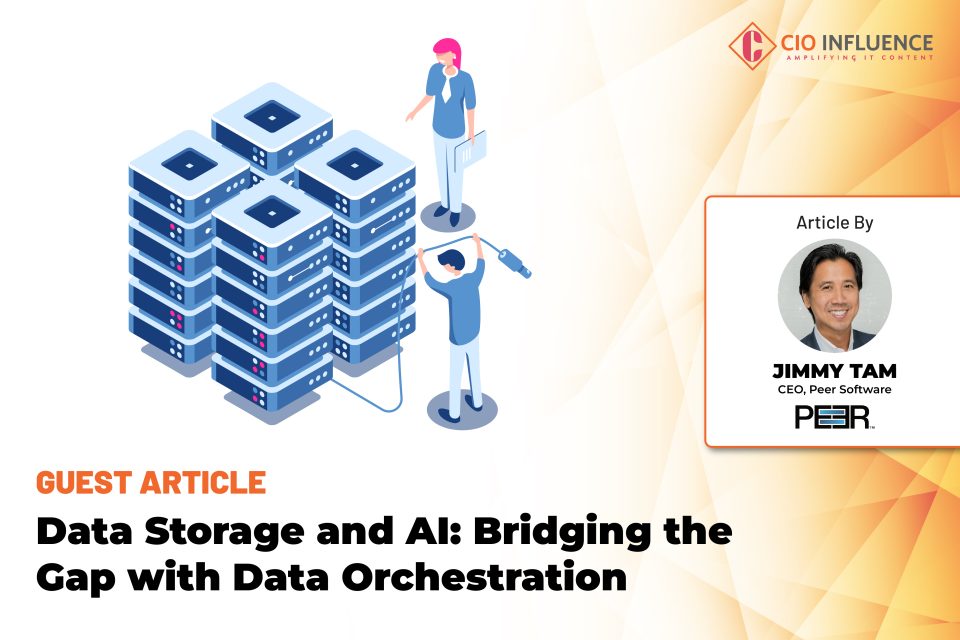In the rapidly evolving world of artificial intelligence (AI) and machine learning (ML), the demand for processing power has reached unprecedented heights. Leveraging AI and ML effectively necessitates vast computational resources, often in the form of powerful GPUs. These GPUs, however, are not only expensive but also in high demand, drawing significant amounts of power. Consequently, the widespread deployment of GPUs today is impractical. Instead, AI workloads are predominantly handled in main data centers or the cloud.
Also Read: CIO Influence Interview with Mike Hamilton, Chief Information Officer, Cloudflare
At the heart of AI is the training process, where algorithms analyze data to identify patterns. For example, AI might be trained to recognize the frequency and context of specific words, creating a statistical model to predict word associations. This training requires extensive computational power and substantial data.
However, data isn’t confined to the cloud or data centers – data is generated everywhere—from smartphones and IoT devices to edge computing systems. This dispersion of data presents a critical challenge: how can we integrate this ubiquitous data into AI models to enhance their accuracy and efficiency?
The solution lies in data orchestration and data management strategies. These methodologies ensure that data from various sources is efficiently collected, processed, and made available for AI workloads.
The Power of Data Orchestration
Data orchestration is the process of managing and optimizing data flow across different systems and platforms. It involves collecting data from diverse sources, transforming it into a usable format, and ensuring it reaches the necessary AI models for training and inference. Here’s how data orchestration bridges the gap between dispersed data and centralized AI processing:
- Data Collection and Aggregation: Data orchestration tools gather data from various sources, whether it’s edge devices, local servers, or cloud platforms. This aggregated data provides a comprehensive dataset that AI models can utilize, enhancing their ability to recognize patterns and make accurate predictions.
- Data Transformation: Raw data collected from disparate sources often comes in different formats. Data orchestration involves transforming this heterogeneous data into a consistent format suitable for AI processing. This step is crucial as it ensures the AI models receive clean and structured data, which is essential for effective training.
- Data Integration: Once the data is collected and transformed, it needs to be integrated into the AI training pipeline. This integration involves feeding the processed data into the AI models, allowing them to learn from a diverse and extensive dataset. The result is a more robust and reliable AI model capable of handling real-world scenarios.
Also Read: Embracing AI and Technology: The Critical Role of Test Data Management and Continuous Compliance Automation for Modern Organizations
Overcoming Challenges with Data Management Solutions
Effective data management is pivotal in handling the vast and varied data required for AI. Here are some key strategies to address the challenges of data storage and management in the context of AI:
1. Scalable Storage Solutions
As data volumes grow, scalable storage solutions become essential. Scale-out NAS provides a robust on-premises data center option for organizations, while cloud storage provides a flexible and cost-effective alternative to store and access large datasets without the need for extensive infrastructure investment. Both on-premises and cloud options today often come with built-in tools for data management, making it easier to organize and retrieve data as needed.
2. Edge Computing
To mitigate the challenges of transmitting vast amounts of data to centralized data centers, edge computing can be employed. By processing data closer to its source, edge computing reduces latency and bandwidth usage. Data that requires immediate analysis can be processed at the edge, while relevant subsets are transmitted to central locations for further AI processing.
3. Automation and AI in Data Management
Leveraging AI within data management processes can significantly enhance efficiency. Automated data pipelines can handle data ingestion, transformation, and integration tasks, reducing manual intervention and ensuring consistency. AI-driven data management tools can also identify and rectify data quality issues, ensuring that the data fed into AI models is accurate and reliable.
The synergy between data storage and data management is crucial for unlocking the full potential of AI technologies. By leveraging data orchestration and robust data management strategies, organizations can effectively harness the power of AI, even when data is generated from diverse and dispersed sources. Scalable storage solutions, edge computing, and automated data management tools are key components in creating an efficient and reliable AI infrastructure.
As AI continues to evolve, the importance of seamless data integration and management will only grow. By addressing the challenges of data storage and orchestration, we can pave the way for more advanced and capable AI systems, driving innovation and efficiency across various industries.
Also Read: Cloud and AI: Data management and data protection are primary pain points for CIOs and CISOs
[To share your insights with us as part of editorial or sponsored content, please write to psen@itechseries.com]


